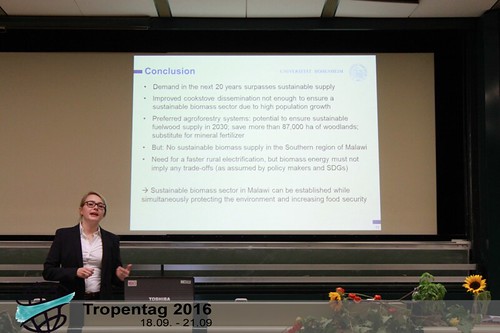Reply to comment
Malawi in the future: will people be able to keep cooking?
Wed, 09/21/2016 - 11:40 — PoscherThe main driving force of an increasing demand was identified to be the strong population growth in Malawi. Through modeling the demand and supply for the future, a big gap between the two was found, threatening the biomass availability. Even though other (not yet used) sources like crop residues may be used in the future, the demand will still exceed the supply up to a very high extent.
What is the government doing? Is it enough to ensure enough fuel for the Malawian people in the future?
The answer, given by the research, is that the planned methods will not be sufficient. The main strategy is the provision of efficient cooking stows to decrease the amount of fuel needed for cooking. The different models, with an optimistic and pessimistic scenarios, showed that, even with a high acceptance of the cooking stows, the supply gap remains.
Despite this finding, the research went further and provided a solution: different, individualizable agroforestry systems to include woody biomass in the farms to increase the fuelwood supply.
One size fits all? Agroforestry systems need to be flexible, especially in Malawi. In areas where farmers have just very small farming areas, the preferences are in favor of agroforestry systems which can provide income in the short term. While in regions where farmers have more space available for agroforestry, acceptance of waiting longer for the first benefits were higher. Despite the time factor of these first assets, additionally, the matter of labor requirement plays a mayor role when shaping the type of agroforestry system.
How will the future in Malawi look like with agroforestry? In the optimistic, behavioral model, the supply gap could be closed. People would have enough biomass supply and be able to keep cooking.
And in the more pessimistic scenario? Combining agroforestry solutions with government's strategy to provide efficient cooking stows will give the possibility to close the supply gap to a high extent.
Time to start implementing agroforestry in Malawi?





